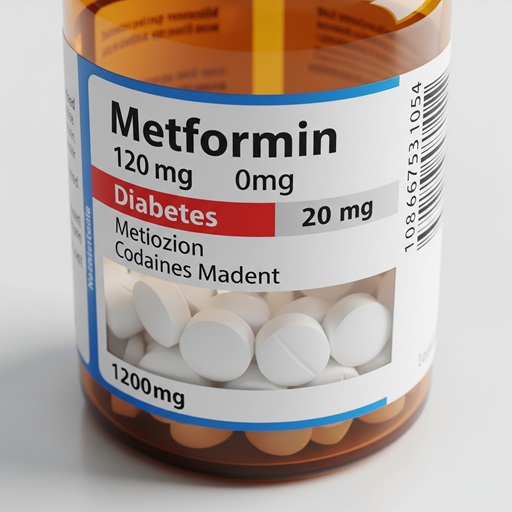Diabetes Management
Meds
Popular Medicine
A1C Control

New Medicine
Smart therapy
Why Meds?
Overview
For many people with diabetes, medication is a crucial part of maintaining healthy blood sugar levels. Whether it’s insulin for Type 1 diabetes or oral and injectable medications for Type 2, the goal of pharmacological therapy is to reduce high blood glucose, prevent complications, and improve overall metabolic health. Medications work best when combined with lifestyle modifications such as healthy eating, regular exercise, stress reduction, and adequate sleep.
Choosing the Right Medication
Factors Influencing Drug Choice:
- Type of diabetes (Type 1 vs. Type 2)
- A1c level and glucose patterns
- Risk of hypoglycemia
- Weight status
- Heart or kidney disease
- Cost and access
- Patient preference and tolerance
Personalized medicine is now emphasized. For example:
- If someone has heart failure, SGLT-2 inhibitors are preferred.
- If weight loss is a goal, GLP-1s or SGLT-2s are ideal.
- If affordability is key, Metformin or Sulfonylureas may be better options.
Medication Adherence: Why It Matters
Many people struggle with medication adherence due to:
- Side effects
- Cost
- Complexity of regimen
- Forgetfulness
- Lack of understanding
Poor adherence = higher A1c, more complications, and hospitalizations.
Tips to Improve Adherence:
- Use pill organizers or medication reminders
- Combine meds when possible (fixed dose combinations)
- Educate on why each medication matters
- Involve caregivers or use health coaching support
- Choose regimens that match lifestyle
Type of Meds
Major Classes of Diabetes Medications
1. Insulin
Used for:
- All people with Type 1 diabetes
- Some people with Type 2 diabetes, especially with long duration or poor control
Types of Insulin:
| Type | Onset | Peak | Duration |
|---|---|---|---|
| Rapid acting (e.g., Lispro, Aspart) | 10–30 min | 1–2 hrs | 3–5 hrs |
| Short acting (Regular) | 30–60 min | 2–3 hrs | 6–8 hrs |
| Intermediate (NPH) | 1–2 hrs | 4–8 hrs | 12–18 hrs |
| Long acting (e.g., Glargine, Detemir) | 1–2 hrs | Minimal | 20–24+ hrs |
| Ultra long acting (e.g., Degludec) | 1–2 hrs | None | 36+ hrs |
Delivery Methods:
Syringes, insulin pens, pumps (CSII), and automated insulin delivery systems (AID/closed loop)
Risks/Side Effects:
- Hypoglycemia (especially if meal timing or dose is off)
- Weight gain (especially with high doses)
- Lipodystrophy (if injection sites are not rotated)
2. Metformin (Biguanide)
Used for:
First-line treatment for most people with Type 2 diabetes
How It Works:
- Reduces liver glucose production
- Improves insulin sensitivity
- Lowers fasting blood sugar
Pros:
- Weight neutral or modest weight loss
- Low risk of hypoglycemia
- Inexpensive and well studied
Side Effects:
- Gastrointestinal discomfort (nausea, diarrhea)
- Rare: lactic acidosis (especially with kidney issues)
3. Sulfonylureas (e.g., Glipizide, Glyburide)
How They Work:
Stimulate the pancreas to release more insulin
Pros:
- Effective at lowering A1c
- Oral and affordable
Cons:
- Risk of hypoglycemia
- Weight gain
- Reduced effectiveness over time (pancreas “burnout”)
4. DPP-4 Inhibitors (e.g., Sitagliptin, Linagliptin)
How They Work:
- Prolong the action of incretin hormones (GLP-1)
- Help increase insulin release and reduce glucagon
Pros:
- Well tolerated
- Low risk of hypoglycemia
- Weight neutral
Cons:
- Modest glucose lowering effect
- Cost
5. GLP-1 Receptor Agonists (e.g., Semaglutide, Liraglutide, Dulaglutide)
How They Work:
Mimic GLP-1 hormone to boost insulin, suppress appetite, reduce glucagon
Pros:
- Significant A1c reduction
- Weight loss
- May reduce cardiovascular events
Cons:
- Injectable (weekly or daily)
- Nausea/vomiting
- Expensive
6. SGLT-2 Inhibitors (e.g., Empagliflozin, Dapagliflozin, Canagliflozin)
How They Work:
Block glucose reabsorption in the kidneys → glucose excreted in urine
Pros:
- Weight loss
- Lower A1c
- Cardiovascular and kidney protection
Cons:
- Risk of urinary/genital infections
- Dehydration, dizziness
- Rare: ketoacidosis (even with normal glucose)
7. Thiazolidinediones (TZDs; e.g., Pioglitazone)
How They Work:
Improve insulin sensitivity in fat, liver, and muscle
Pros:
- Long lasting effect
- Helps fatty liver disease
Cons:
- Weight gain
- Fluid retention → caution in heart failure
- Bone fracture risk
Future of Diabetes Medications
- Smart insulin: being developed to release based on glucose levels
- Dual or triple hormone agonists (e.g., GLP-1/GIP combos) are showing superior glucose and weight benefits
- Gene therapy and beta cell regeneration are areas of active research

